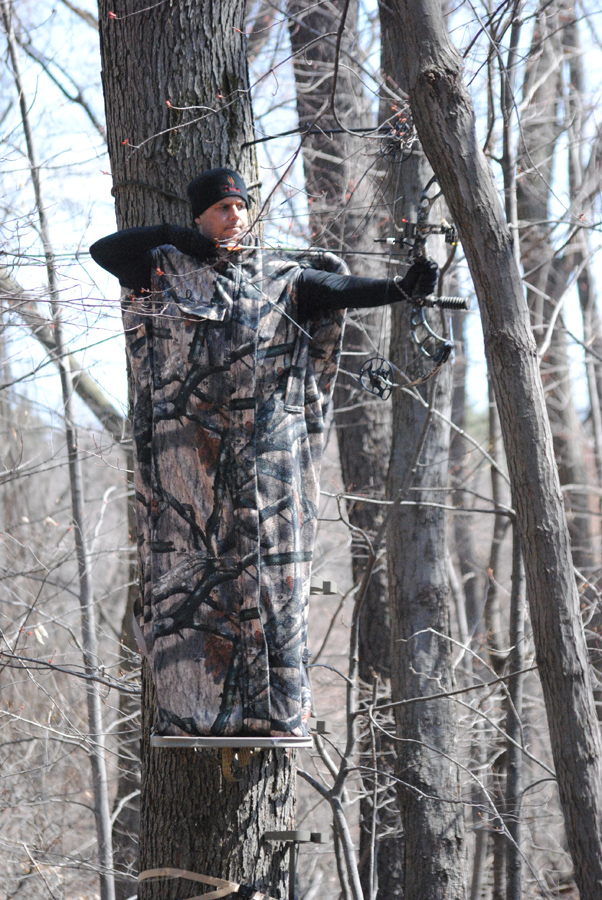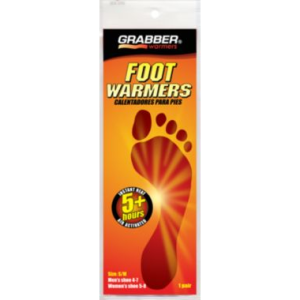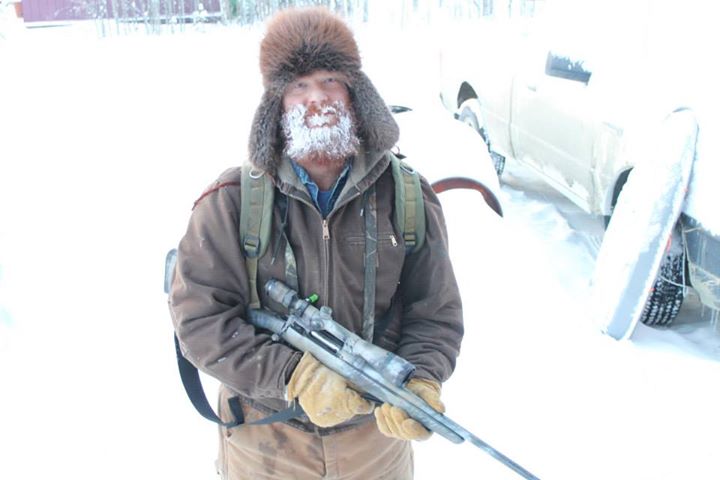With this recent blast of arctic air we’ve been experiencing, it seemed like a good time to review staying warm while playing outside. We outdoor folks face several challenges that are unique to our passion. While there are many cold weather activities people participate in, skiing, hiking, snowshoeing, etc., those are all fairly active endeavors. Some of the silly things we consider fun like sitting in a treestand, hovering over a hole in the ice, standing knee deep in a frozen lake hoping the ducks are flying are all fairly sedentary activities. Actually, sedentary may be the wrong term because often they start with a lot of physical exertion, getting to and climbing into your stand, setting decoys, drilling holes in the ice all require work, only to be followed by long periods of inactivity which is a recipe for getting cold.
One of the biggest challenges us hunters face is getting bundled up to stay warm, but not so much that we cannot draw a bow or shoulder a gun. Layering is more critical than ever and for these frigid conditions I like to start with a heavyweight base layer of fleece or Polartec material. Additional layers will be added accordingly based on the actual activity. Another piece I like to incorporate when the temps plummet is a vest, which keeps the torso/core warm without adding too much bulk.
Late season treestand hunts are one of the most challenging with the extreme cold. Your elevated position gives you little protection from the wind and movement must still be minimized if you ever hope to see anything, so doing calisthenics really isn’t an option while on stand. One strategy worth a look for extended sits are garments like the Heater Body Suit or the Warmbag. These are essentially wearable sleeping bags that are intended to be worn while on the stand. What I like about these products is that you can walk to your stand in minimal clothing and “layer up” once you settle in.

Keeping the core warm is critical, so remember the advice from your mother and make sure you’ve got your stocking cap on. Hoods also help keep heat from escaping from the head/neck area, although I do hate that they limit peripheral vision and muffle sounds that might alert my to an approaching animal.
Face protection is another consideration in the extreme cold. I prefer a facemask that lets me exhale through my nose letting the warm air escape, instead of being trapped inside a full facemask turning damp and soggy as the day wears on.
Extremities are the main thing people struggle to keep warm when the temp drops. Cold feet probably being number one reason forcing folks back inside. Here are a couple strategies to help keep your toes warm. First, when treestand hunting take some time to insulate your stand platform with carpet or another heavyweight material that will help prevent the transfer of cold metal directly into your boots.
Second, make sure your boots are large enough to allow your toes some wiggle room, taking into consideration you’ll be wearing multiple layers of heavy socks. This is probably the first place people go wrong, wearing boots that are too small and cutoff circulation to the feet.
Obviously, boots themselves should be well insulated; I’d suggest a minimum of 800 grams Thinsulate for sedentary outdoor activities. The challenge with all that insulation is keeping your feet from sweating while hiking in. Here are a couple things to try:
- Bring a change of socks and change into a dry pair once you arrive at your stand.
- Wear a base or wicking sock under a heavier wool/Smartwool sock, to help pull moisture away from the skin.
- Try using a spray on antiperspirant to keep feet from sweating.
- Chemical or electric heaters. A couple quick points with these, we’ve had better luck with the heated socks vs. the heated insoles,

Grabber – Foot Warmers but be warned they eat batteries quickly. In regard to the chemical warmers, try to open them up before heading to the stand which seems to help with the chemical reaction, vs. throwing them directly into your boot. They do make a newer version designed to be worn within a boot, which is preferable to trying to keep the small rectangular one where it’s supposed to be (under your toes). I’d look to these options as a last resort as I don’t like buying things that need continual replacing.
With proper planning nothing beats getting, and staying, outside when the temps drop. Good luck and stay warm out there!


Zach Sanders
Another option for a base layer: I use military issue polypropylene based long underwear to keep me warm on the bottom… layer. It seems to wick sweat well during those periods of exertion, and dry quickly to keep me warm all day. Usually found at military surplus stores, these long underwear are almost always cheaper than anything else.